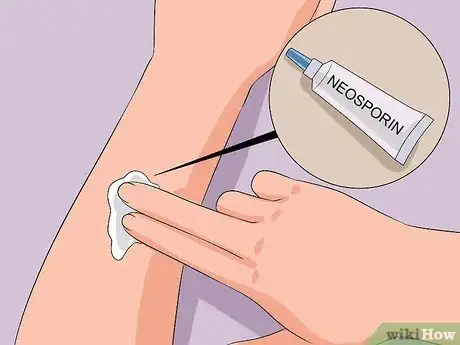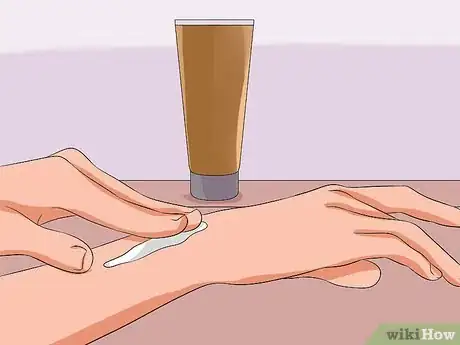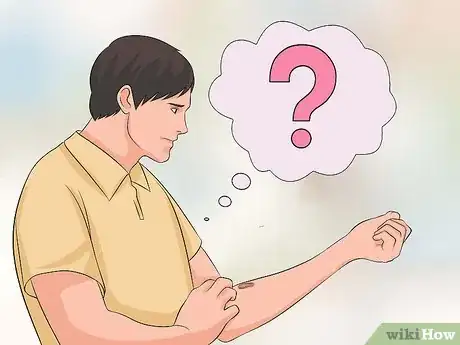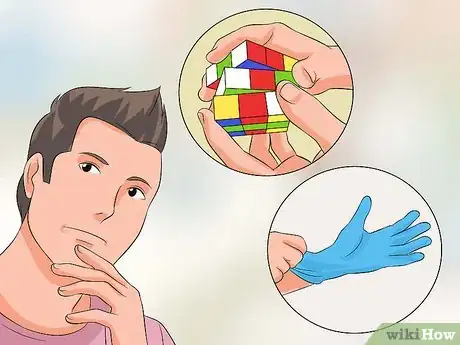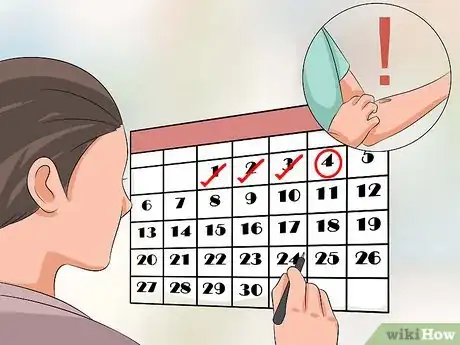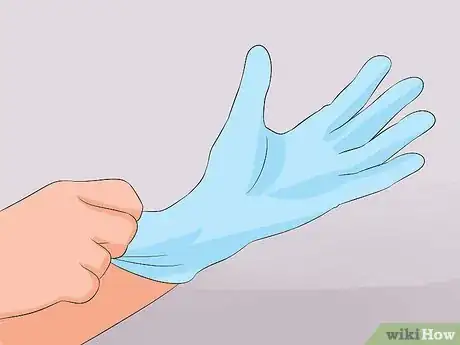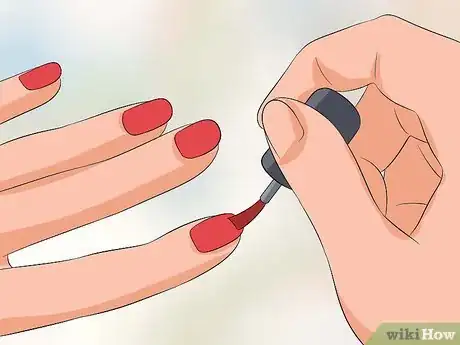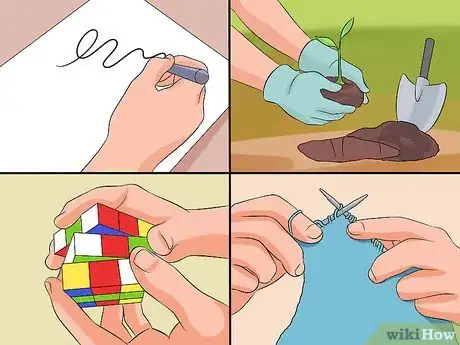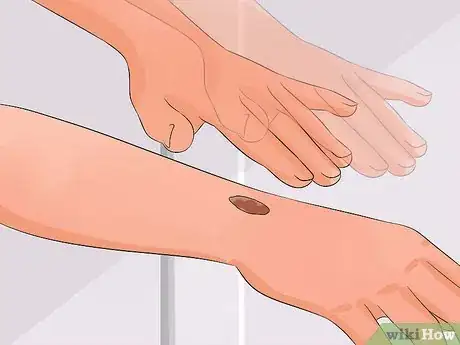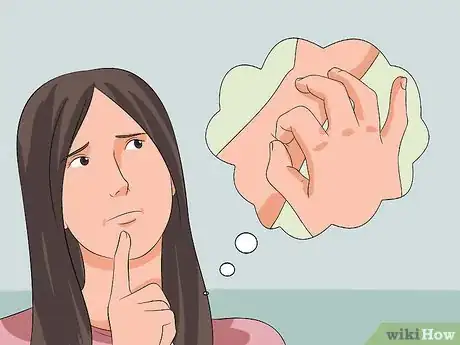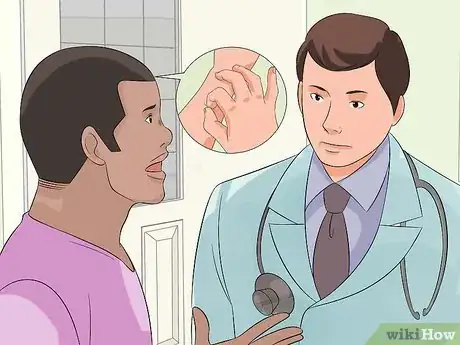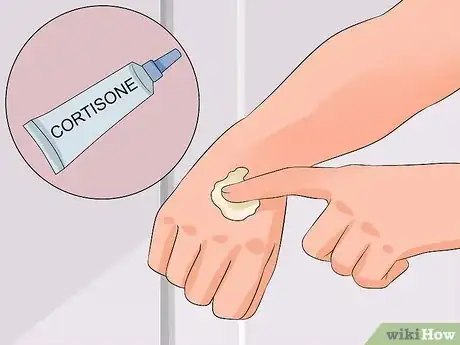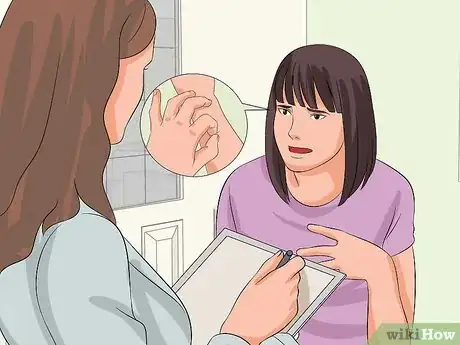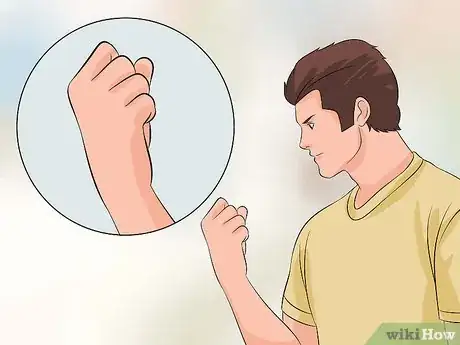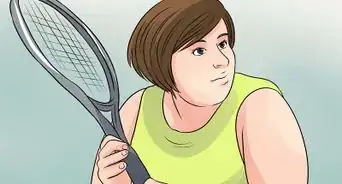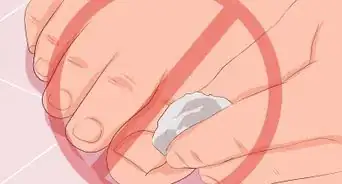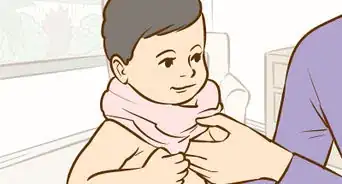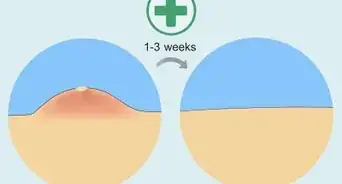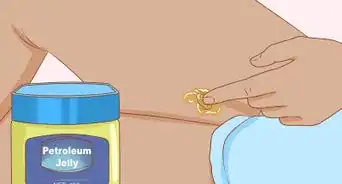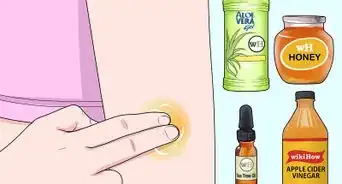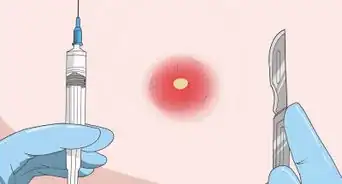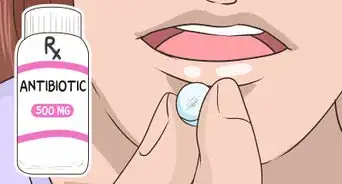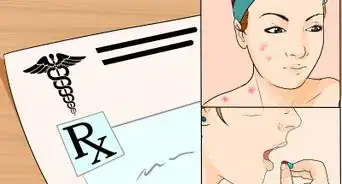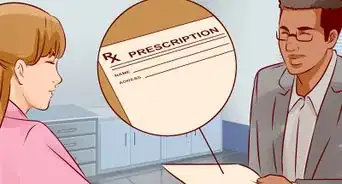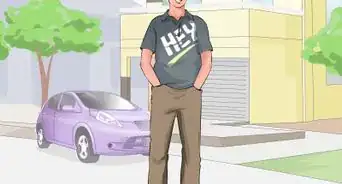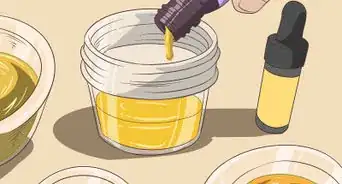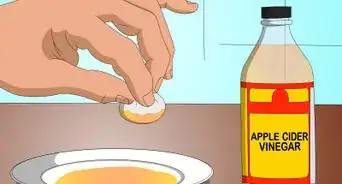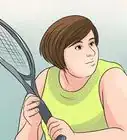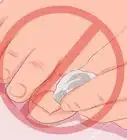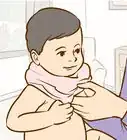This article was co-authored by Chris M. Matsko, MD. Dr. Chris M. Matsko is a retired physician based in Pittsburgh, Pennsylvania. With over 25 years of medical research experience, Dr. Matsko was awarded the Pittsburgh Cornell University Leadership Award for Excellence. He holds a BS in Nutritional Science from Cornell University and an MD from the Temple University School of Medicine in 2007. Dr. Matsko earned a Research Writing Certification from the American Medical Writers Association (AMWA) in 2016 and a Medical Writing & Editing Certification from the University of Chicago in 2017.
There are 10 references cited in this article, which can be found at the bottom of the page.
wikiHow marks an article as reader-approved once it receives enough positive feedback. This article received 15 testimonials and 81% of readers who voted found it helpful, earning it our reader-approved status.
This article has been viewed 450,249 times.
Picking scabs is a hard-to-break habit that can lead to unsightly and harmful conditions, like infection, blemishes, or scarring. If done compulsively, it can also be a sign of a Body-Focused Repetitive Disorder (BFRD) called "Skin Picking Disorder". While difficult, it is possible for you to rid yourself of this behavior through patience, effort, and, if need be, outside assistance.
Steps
Treating Your Scabs
-
1Disinfect the wound. Open wounds and sores can develop infections. Always wash a new wound thoroughly with soap and water as soon as you obtain it. Then clean it up with an antiseptic wipe or a bit of Neosporin and apply a bandage to protect it while it heals. You can also try using betadine or peroxide on the wound to clean and remove unwanted bacteria. These basic precautions will help to keep it clean and prevent infection.[1]
-
2Keep the scab protected. Scabs form over wounds to keep out germs while the body repairs skin cells and tissue. It is important to help the healing process by protecting this barrier.[2]
- If you cannot bandage it, try applying moisturizer or lotion as it heals. Scabs kept protected will usually leave less scarring. The slight skin massage that comes with applying moisturizer will also increase circulation and help it to heal properly.
- Take a fingernail file and carefully smooth the scab down to the surrounding skin.[3] Then, when your hand rubs across the area, it will be less of a temptation and harder to pick.
Advertisement -
3Be proactive. Ensure fewer scabs by using healthy products to properly cleanse your skin. Make sure that skin products aren't causing blemishes that tempt you to pick.
Breaking the Habit
-
1Study yourself. There may be reasons why you are picking at your scabs, ranging from purely physical (they itch) to mental or emotional (perhaps as a way to relieve tension). Understanding the root cause can help you to break the habit.[4]
- Not everyone who picks their scabs has a behavioral problem. Some amount is normal. Other times it is a sign of skin problems, drug use of withdrawal, or other conditions. It only becomes a behavioral disorder when it is so frequent that it impacts other aspects of your daily life.[5]
- People pick their skin for various reasons. For some it is boredom, while for others it can be a way to relieve negative feelings, depression, or stress. Sometimes it is unconscious; at other times the picker experiences feelings of guilt.[6]
- Keeping a log can make you aware of when, where, and how often you are picking, especially when it happens unconsciously. Whenever you catch yourself, record it in a notebook.
-
2Develop effective coping strategies. Once you have an idea of when and why you are picking your scabs, try things that divert your attention or remind you not to pick. It may take one or more different ways to control your behavior. Be strategic and use methods that suit your own situation.
-
3Try challenging yourself. If you are a self-motivated and competitive person, make breaking your habit into a sort of contest. Set a number of days or hours to go without picking and gradually increase this. Then reward yourself for significant progress.
-
4Make picking more difficult. One way to stop is to make the habit physically hard. Cut your nails, wear gloves, or cover the scabs. Having shorter fingernails will make it harder for you to pick. Keeping scabs bandaged will prevent you from looking at them and help you resist the urge to pick.[7]
- Try soft cotton gloves. Not only do they act as a barrier, but they should make you even more conscious of the behavior and help you to reduce it.[8]
- If you tend to pick at your arms or legs, wear long sleeves and pants whenever possible. If the scabs are on your ankle, wear high socks. This way, even if you give in, you will pick at the fabric rather than the skin itself.
-
5Apply acrylic fingernails. This is another way of making your picking harder — and also a fashion-sensible one. It will be more difficult because you will have to scrape with thicker nails, which won't catch the skin as easily. Thin nails are sharp and can slice off the scab.
- If you go this route, have the manicurist make the nails as short and thick as possible. This will be added insurance against damaging the skin.
-
6Replace your habit with something less destructive. When you feel the urge, distract yourself or channel your energy into something else. Try reading books, going for a walk, or watching television when you feel the urge to pick.[9]
- Finding a habit that occupies your hands is even better and is something that is commonly used to quit smoking. You might try drawing, gardening, knitting, doing a puzzle, playing the piano, or crocheting. You can even just hold a coin or paperclip. If nothing else works, sit on your hands.[10]
-
7Practice positive affirmation. Remember to respect yourself whenever you catch yourself picking. Press on the scabbed area or wave your hand over the scabs, with a reminder that you love yourself and want to protect your skin. Try this technique before bed and when you wake up.
-
8Don’t give up! It will take a long time to undo the habit at first. But if you are successful just once, you can do it again and will eventually reduce your picking. Be proud of your progress. With care and time, you can gradually free yourself of the habit.
Getting Medical Help
-
1Recognize a problem. If out of control, scab picking can be a sign of a bigger behavioral problem called "Skin Picking Disorder." People with Skin Picking Disorder compulsively touch, scratch, pick, or rub their skin, which can result in scarring or worse.[11] Try asking yourself the following questions:
- Does your skin picking take a lot of your time up?
- Do you have noticeable scars from skin picking?
- Do you feel guilty when you think about your skin picking?
- Does your skin picking cause significant disability socially or professionally?
- If you answer yes to more than one of these questions, you may have SPD.
-
2Seek professional help. Scab picking may indicate SPD or another medical problem, like psoriasis or eczema. It is important to consult a medical professional to find out what is causing it, and whether it is independent or a symptom of a different, underlying problem.
- There are any number of different therapies available for chronic scab picking. Some might involve medication to relieve physical triggers, while others use behavioral therapy. Once a doctor discovers what is wrong, she can advise you on the best treatment.[12]
- SPD is a variant of Obsessive Compulsive disorder because of the compulsive urge to perform repetitive behaviors.
- Your SPD may be related to depression, bipolar disorder, attention/deficit hyperactivity disorder, and an eating disorder. Other conditions similar to SPD include body dysmorphic disorder, trichotillomania (pulling out hair), and nail biting.
-
3Follow a medical regimen. Your scab picking may be due to a physical problem and not to SPD. It may be dermatological, like eczema, for example, an inflammation of the skin that can cause itching. In this case the doctor may prescribe medication like corticosteroids or other topical creams.
- Remember, the medicine will treat the underlying cause of your scab picking, but it will not address the habit itself. Even if the physical triggers disappear, you may still feel the psychological urge and need help.
-
4Seek psychological treatment. If your picking is not caused by a physical condition and is Skin Picking Disorder, you may need to consult a professional about getting counseling. One common psychological treatment option is Cognitive Behavioral Therapy or CBT.[13]
- CBT is often used to help people replace bad habits with good ones. There are different forms of available for scab picking.
- Treatment may involve dermatological therapy, antidepressants, anxiolytics, or antipsychotics.
-
5Consider habit reversal training (HRT). HRT is a form of CBT, for example, based on the idea that scab picking is a conditioned behavior. It helps you recognize situations in which you are likely to pick and discourages the behavior by substituting alternative responses, like balling up your fists, when faced with the urge to pick.
-
6Consider stimulus control (SC), as well. SC is another method that lessens sensory triggers in your environment that lead to picking – that is, “high risk” situations. It teaches you how to avoid circumstances that might lead you to pick, like changing your bathroom behavior if looking in the mirror is your trigger.
Expert Q&A
-
QuestionHow do I stop picking at scabs on my face?
 Chris M. Matsko, MDDr. Chris M. Matsko is a retired physician based in Pittsburgh, Pennsylvania. With over 25 years of medical research experience, Dr. Matsko was awarded the Pittsburgh Cornell University Leadership Award for Excellence. He holds a BS in Nutritional Science from Cornell University and an MD from the Temple University School of Medicine in 2007. Dr. Matsko earned a Research Writing Certification from the American Medical Writers Association (AMWA) in 2016 and a Medical Writing & Editing Certification from the University of Chicago in 2017.
Chris M. Matsko, MDDr. Chris M. Matsko is a retired physician based in Pittsburgh, Pennsylvania. With over 25 years of medical research experience, Dr. Matsko was awarded the Pittsburgh Cornell University Leadership Award for Excellence. He holds a BS in Nutritional Science from Cornell University and an MD from the Temple University School of Medicine in 2007. Dr. Matsko earned a Research Writing Certification from the American Medical Writers Association (AMWA) in 2016 and a Medical Writing & Editing Certification from the University of Chicago in 2017.
Family Medicine Physician You might want to place a band-aid or covering over it so that you have some physical barrier between the scab and your picking.
You might want to place a band-aid or covering over it so that you have some physical barrier between the scab and your picking. -
QuestionI am addicted to picking my scabs. One on my forehead now looks like a burn mark. How do I stop?
 Chris M. Matsko, MDDr. Chris M. Matsko is a retired physician based in Pittsburgh, Pennsylvania. With over 25 years of medical research experience, Dr. Matsko was awarded the Pittsburgh Cornell University Leadership Award for Excellence. He holds a BS in Nutritional Science from Cornell University and an MD from the Temple University School of Medicine in 2007. Dr. Matsko earned a Research Writing Certification from the American Medical Writers Association (AMWA) in 2016 and a Medical Writing & Editing Certification from the University of Chicago in 2017.
Chris M. Matsko, MDDr. Chris M. Matsko is a retired physician based in Pittsburgh, Pennsylvania. With over 25 years of medical research experience, Dr. Matsko was awarded the Pittsburgh Cornell University Leadership Award for Excellence. He holds a BS in Nutritional Science from Cornell University and an MD from the Temple University School of Medicine in 2007. Dr. Matsko earned a Research Writing Certification from the American Medical Writers Association (AMWA) in 2016 and a Medical Writing & Editing Certification from the University of Chicago in 2017.
Family Medicine Physician You may want to talk to your doctor about obsessive compulsive disorder or other pathologies like skin picking disorder.
You may want to talk to your doctor about obsessive compulsive disorder or other pathologies like skin picking disorder.
Warnings
- Constant picking of scabs increases the likelihood of infection and scars.⧼thumbs_response⧽
- Please seek help if you develop a serious infection or are unable to control your picking.⧼thumbs_response⧽
- As with any medical situation, consult a doctor before acting.⧼thumbs_response⧽
References
- ↑ http://www.mayoclinic.org/first-aid/first-aid-cuts/basics/art-20056711
- ↑ http://kidshealth.org/kid/talk/yucky/scab.html
- ↑ https://www.webmd.com/skin-problems-and-treatments/psoriasis/psoriasis-remove-dead-skin
- ↑ https://universityhealthnews.com/daily/pain/picking-scabs-why-we-do-it-and-how-to-stop/
- ↑ https://iocdf.org/wp-content/uploads/2014/10/Skin-Picking-Disorder-Fact-Sheet.pdf
- ↑ https://iocdf.org/wp-content/uploads/2014/10/Skin-Picking-Disorder-Fact-Sheet.pdf
- ↑ https://www.health.harvard.edu/blog/picking-your-skin-learn-four-tips-to-break-the-habit-2018112815447
- ↑ http://ocdla.com/abcs-dermatillomania-compulsive-skin-picking-1979
- ↑ https://universityhealthnews.com/daily/pain/picking-scabs-why-we-do-it-and-how-to-stop/
- ↑ http://quitsmoking.about.com/od/tipsforquitting/a/DrGilchristtips.htm
- ↑ http://www.aamft.org/iMIS15/AAMFT/Content/consumer_updates/body_focused_repetitive_disorders.aspx
- ↑ https://health.clevelandclinic.org/cant-stop-picking-skin-break-cycle/
- ↑ https://health.clevelandclinic.org/cant-stop-picking-skin-break-cycle/
About This Article
To stop picking your scabs, keep your hands busy with something else, like knitting, drawing, playing an instrument, or doing a puzzle. You can also fidget with a coin or paperclip to keep your hands busy when at school or work. Additionally, make picking more difficult by wearing long sleeves or pants that cover the scab, cutting your nails short, and keeping the scabbed area bandaged until it’s healed. If you’re picking at your skin because it’s itchy, try corticosteroids or other topical creams to manage the symptoms. For more tips from our Medical co-author, including how to properly treat your scabs, keep reading!
